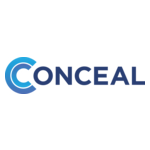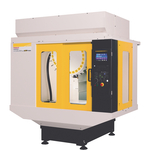Kaiser Permanente's large-scale Parkinson’s behavioral research looked at how consumer technology can help with PD symptoms, key data points include:
- 42% reduction in emergency room visits
- 18% reduction in specialists’ time
- 90% of patients increased exercise
- 80% better medication adherence
Rune Labs’ StrivePD Nearly Halves ER Visits for Parkinson’s Patients in Program with Kaiser Permanente
Consort Partners for Rune Labs
runelabs@consortpartners.com
Rune Labs, a leader in precision medicine for Parkinson’s Disease (PD), today previewed the results of an ongoing nine-month research program involving a diverse cohort of 138 Kaiser Permanente PD patients across California. The patients had an age range of 39 to 88 years and a mean disease duration of six years. In the care management program, all patients used an Apple Watch and Rune Labs’ StrivePD app to record their behavior for at least six hours of data per day for seven days per week. Patients with moderate severity (Hoehn and Yahr stage 2 & 3), bilateral symptoms and responsiveness to dopaminergic agents were included in the research. The research and poster were presented by Ro’ee Gilron, PhD, Lead Neuroscientist at Rune Labs, at the 2024 International Congress of Parkinson’s Disease and Movement Disorders on September 29, 2024 in Philadelphia.
Mr. Gilron explained: “By taking a tailored approach informed by ongoing patient-specific data, we have seen substantial improvements in symptom management. With a significant reduction in ER visits, increased exercise levels, and enhanced participation in physical therapy, this preliminary data highlights promising and impactful benefits for patients, caregivers, and clinicians.”
Data collected included exercise and activity, sleep, falls and mobility, hospitalizations and medication compliance. Over 211,000 hours of data were collected and analyzed across 40,000 data points. The research found highly variable patterns in the number of “red flags” patients reported as well as mobility, tremor and dyskinesia patterns across the patient population. By better understanding these patterns, a 42% reduction in emergency room visits was reported by Kaiser Permanente with a corresponding 18% reduction in specialists’ time.
Key findings are from the 138 Kaiser Permanente patients before and after joining StrivePD, headline data include:
- 42% reduction in emergency room visits
- Movement disorder specialist visit rates reduced by 18%
- 90% of patients increased their exercise
- 52% of users exercised more than 150 min/week
- 78% of patients reported better insights into their health for their clinicians
- 80% of patients better adhered to their medication schedules
- Patient engagement with AI was high: the equivalent of one-and-a-half novels worth of notes were generated by patients
Patients also felt more confident and were able to increase their exercise minutes significantly.
Dr. Suketu Khandhar, a neurology specialist at Kaiser Permanente’s Sacramento Medical Center, emphasized the importance of these findings: “Due to StrivePD, I can approach each patient session with a much richer understanding of their disease progression. Patients also feel more confident in managing their symptoms, which has led to increased exercise and better health outcomes.”
Keith Narasaki, a Parkinson’s patient in the San Francisco Bay Area explained: “A few months back I thought I needed more visits with my doctor, but now StrivePD has helped me see a lot more about how I’m doing day to day, so now I feel that my visit frequency is fine the way it is. StrivePD has provided important information in my treatment of how I can manage my PD symptoms. It has helped quantify how and when I can optimize taking advantage of my ON time and try to remain functional during my off periods.”
The data collected was used to monitor, triage and manage patient risk. The mobility and symptom data was especially helpful in monitoring fall risk, medication compliance and strategy, and to contextualize patient-reported symptoms. The data was also used in human coaching sessions for patients, with large-language models (LLMs) being utilized to generate personalized symptom reports. Patient satisfaction with the LLM-generated personalized clinical summary reports was reported to be very high, with the reports being found to be valuable, easily interpretable and helpful in facilitating communication between patients and clinicians.
“This is large-scale research in partnership with one of the biggest healthcare systems in the U.S. The results provide hope for more than a million patients struggling with Parkinson’s Disease that consumer technologies can help patients, caregivers, and clinicians to better understand the patterns and triggers of this complex disease,” said Brian Pepin, CEO of Rune Labs. “There’s never been a shortage of data around PD. The big obstacle has been collecting, analyzing and making this data usable at scale, and this program has achieved exactly that.”
This research is published against the backdrop of an urgent nationwide shortage of movement disorders specialists. With only 600 movement disorders specialists available to care for over one million patients, this shortage has led to gaps in patient care, including ineffective therapeutic interventions, increased hospitalizations, and a surge in emergency room visits due to falls. According to the Centers for Disease Control and Prevention (CDC), falls among adults aged 65 and older led to nearly 3 million emergency department visits in 2021 alone. Falls are a leading cause of injury and death in this age group. Furthermore, these falls result in more than 650,000 hospitalizations annually for over 65s, with older women almost twice as likely as men to require ER treatment and hospitalization for fall-related injuries. As a result, healthcare costs for in-patient care have exceeded $7.9 billion annually.
This new research showed the increased efficacy of continuous digital monitoring using StrivePD to help fill this care management gap. Moreover, the precision data generated was proactively used to better understand each patient’s symptoms and promptly identify individuals at high risk for emergencies. This data also will help to reduce the 40% of patients who are treated with therapeutics that lack efficacy, often leading to an exacerbation of symptoms.
The findings from this program suggest that widespread adoption of technologies like StrivePD could lead to improvements in PD management and significant reductions in healthcare costs. “There is a substantial clinical and economic burden associated with Parkinson’s Disease and its management. New insights from targeted data analyses, such as those collected with Kaiser Permanente, help further quantify the value proposition of StrivePD and identify key drivers of improved patient outcomes. These insights also highlight potential cost savings from reducing costly events, including ER visits and specialist consultant time,” said Jan B. Pietzsch, Ph.D., President and CEO of health economics consultancy and core lab Wing Tech Inc.
About Rune Labs
Rune Labs is a software and data analytics company for precision neurology, supporting care delivery and therapy development. StrivePD is the company's care delivery ecosystem for Parkinson's disease, enabling patients and clinicians to better manage Parkinson's by providing access to curated dashboards summarizing a range of patient data sources, and by connecting patients to clinical trials. For therapeutics development, biopharma and medical device companies leverage Rune's technology, network of engaged clinicians and patients, and large longitudinal real-world datasets to expedite development programs. The company has received financial backing from leading investors such as Nexus NeuroTech, Eclipse Ventures, DigiTx, TruVenturo and Moment Ventures. For more information, please visit runelabs.io and strive.group.
View source version on businesswire.com: https://www.businesswire.com/news/home/20240930307079/en/
 Business wire
Business wire 









Add Comment